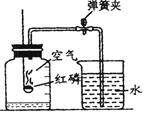A Frenchman, the psychologist Alfred Binet, published the first standardized test of human intelligence in 1905. (46)But it was an American, Lewis Terman, a psychology professor at Stanford, who thought to divide a_test taker’s "mental age," as revealed by that score, by his or her biological age to derive a number that he called "IQ". It would be hard to think of a pop-scientific coinage that has had a greater impact on the way people think about themselves and others.
(47)No country: embraced the IQ more thoroughly than the U.S., where millions of people have their IQ measured annually, many with a direct descendant of Binet’s original test, although not necessarily for the purpose Bin et intended. He developed his test as a way of identifying public school students who needed extra help in learning, and that is still one of its leading uses.
But the broader and more controversial use of IQ testing has its roots in a theory of intelligence—part science, part sociology—that developed in the late 19th century, before Binet’s work and entirely separate from it. (48)Championed first by Charles Darwin’s cousin Francis Galton, it held that intelligence was the most valuable human attribute, and that if people who had a lot of it could be identified and put in leadership positions, all of society would benefit.
Terman believed IQ tests should be used to conduct a great sorting out of the population, so that young people would be assigned on the basis of their scores to particular levels in the school system, which would lead to corresponding socioeconomic destinations in adult life. The beginning of the IQ-testing movement overlapped with the eugenics movement—hugely popular in America and Europe among the "better sort".
In 1958 a British sociologist named Michael Young coined the word "meritocracy" to denote a society that organizes itself according to IQ-test scores. Terman and many other early advocates of IQ testing had in mind the creation of an American meritocracy, though the word didn’t exist then. (49)They believed IQ tests could be the means to create, for the first time ever, a society in which advantage would go to the people who deserved it rather than to those who had been born into it.
In order to believe this, though, you have to believe that merit and a score on an IQ test are the same thing. (50)Long before IQ was invented, America prided itself on beinga country without a class system, in which people of talent and industry would rise and be rewarded. The advent of intelligence tests did not dramatically affect the degree of social mobility in the U.S.—at least not enough for any change to show up in the social-science data.
(48)Championed first by Charles Darwin’s cousin Francis Galton, it held that intelligence was the most valuable human attribute, and that if people who had a lot of it could be identified and put in leadership positions, all of society would benefit.

